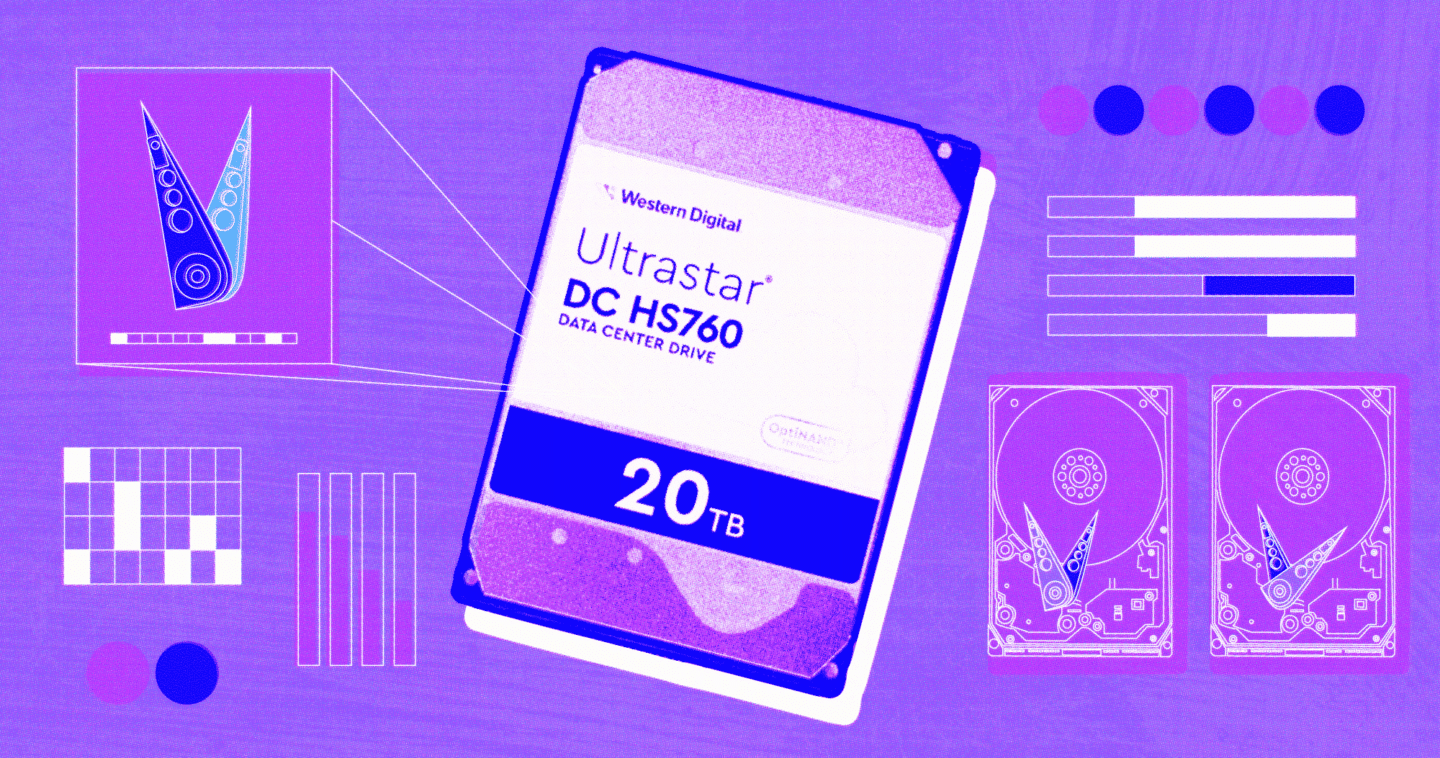Look inside most modern computers, and you’ll see a horde of heatsinks crowning different devices. But until now, SSDs weren’t one of them. In fact, SSDs were considered a cooler alternative to PC hard drives, as they had a lower power draw and no friction from moving parts. However, as SSDs continue to push the trajectory of faster and smaller, SSD heatsinks are becoming an essential and hotly debated device.
What’s a heatsink?
A heatsink is a component that moves heat away from a device, similar to how a radiator cools an engine. Heatsinks are usually made of a highly conductive material that can quickly absorb excessive heat and then dissipate it to the surrounding air.
Modern computing has made heatsinks ubiquitous. The more performance, transistors, and capabilities are squeezed into a smaller space, the more heat they generate.
All modern CPUs and GPUs require a heatsink. Many even require the addition of a fan to keep the device from overheating and protect its delicate internal components. But why are SSDs adopting them?
Do SSDs need a heatsink?
When SSDs were introduced, they initially took on a skeuomorphic design, so they could replace HDDs without requiring system changes. But as the market matured and personal computing devices wanted to go thinner and lighter, flash did what it does best: it got smaller.
Most internal SSDs today leverage the M.2 format (pro tip: it’s pronounced m dot two). M.2 is an SSD format that is small, thin, and shaped like a stick of chewing gum. It doesn’t require any cables, directly connects to a motherboard, and can leverage two significant innovations: the NVMe™ protocol and PCIe® interface.
In their initial desire for adoption through convenience, SSDs used the same storage protocols as HDDs (SAS and SATA). But these protocols, which govern how data is moved to/from a storage device, left flash performance untapped.
The NVMe protocol was written from the ground up to take advantage of flash’s speed, particularly the ability to read and write data in a parallel fashion. NVMe also takes advantage of the PCIe interface, the high-speed “plug” that connects a device to the motherboard.
Couple PCIe Gen4 with NVMe, and M.2 SSDs just went from fast to blistering speeds.
PCIe has seen an evolution of its own. The standard recently introduced its fourth generation (PCIe Gen4), which doubles the data rate of its predecessor. Why the long intro? Because couple PCIe Gen4 with NVMe and M.2 SSDs just went from fast to blistering speeds.
When Flash Turns up the Heat
Every bit of data read or written to an SSD requires electricity to pass through the device to one of its trillions of NAND flash cells. As electricity always produces heat, the rapid access speeds of NVMe and PCIe Gen4 mean SSDs are getting fiercely hot.
Above a specific temperature, an SSD will need to throttle its performance to protect its internal components. Thankfully, this ensures users won’t fry their device. But if you’ve invested in the latest, fastest, data-gorging M.2 SSD, having it underperform when you need it most is unacceptable.
Therefore, SSD heatsinks have become inescapable in use cases like gaming, video, or design workflows that see sustained read and/or write operations. Want to expand the storage of your PlayStation®5 (PS5) console? You’ll need a heatsink, according to Sony.
“A heatsink is about making sure Your SSD never slows down,” explained Jared Peck, director of product management at Western Digital and part of team working on WD_BLACK. WD_BLACK was one of the earlier SSDs to introduce heatsinks for gaming and other workloads. Peck has worked closely with Sony to license it for PS5™ consoles.
“Developing the WD_BLACK with heatsink was all about giving end users that speed so that they don’t drop out of the game, so they won’t see a frame drop or get a glitch because data wasn’t available as quickly as it should be,” he said.
What makes a good SSD heatsink?
Today, the market is decorated with heatsink options, from integrated heatsinks to generic add-on heatsinks and even gold-plated ones for those who want extra bling.
But what makes a good heatsink?
According to Peck, it’s first about good conducting material. Most heatsinks in the industry use aluminum. Then there’s the shape of the heatsink. There needs to be enough mass to effectively dissipate the heat. “You don’t want heat to just be moving into the heatsink, you want it to move beyond, and for that you need the heatsink to have enough mass,” said Peck.
Initially, the award-winning WD_BLACK SSD used the most common heatsink design element: fins. Fins create a large surface area surrounded by air, allowing convection to quickly carry heat away.
“We put the heatsink together in a way that has no ambiguity and no mystery.”
That design was created by EK Water Blocks (EKWB), one of the industry’s leaders in performance heat management. The company’s designs adorn many computing components, from CPUs to GPUs and liquid cooled PCs.
But Peck explained that for the latest generation, WD_BLACK SN850X, Western Digital used its in-house heatsink designs.
“Vertically integrated solutions are a buzzword in the industry but what that practically means is that we [Western Digital] made the memory, we designed the controller, and we developed the firmware,” said Peck. “This level of integration lets us figure out how the drive will interact with the heatsink and specifically lean into the parts we think are important. We know which chips we will push hardest to get the best performance and then we are able to make sure those chips get the maximum benefit out of our heatsink design.”
For Peck and the rest of the WD_BLACK team, it’s clear that the best heatsink will come from an integrated solution and a company that knows how to bring advantages to that flow. “We put the heatsink together in a way that has no ambiguity and no mystery,” he said.
Ultimately, which heatsinks consumers choose will depend on the use case and their budget. The options are plentiful, and the industry, and Peck, promise we’ll soon see even more innovation in the hot pursuit of the ultimate SSD heatsink.



